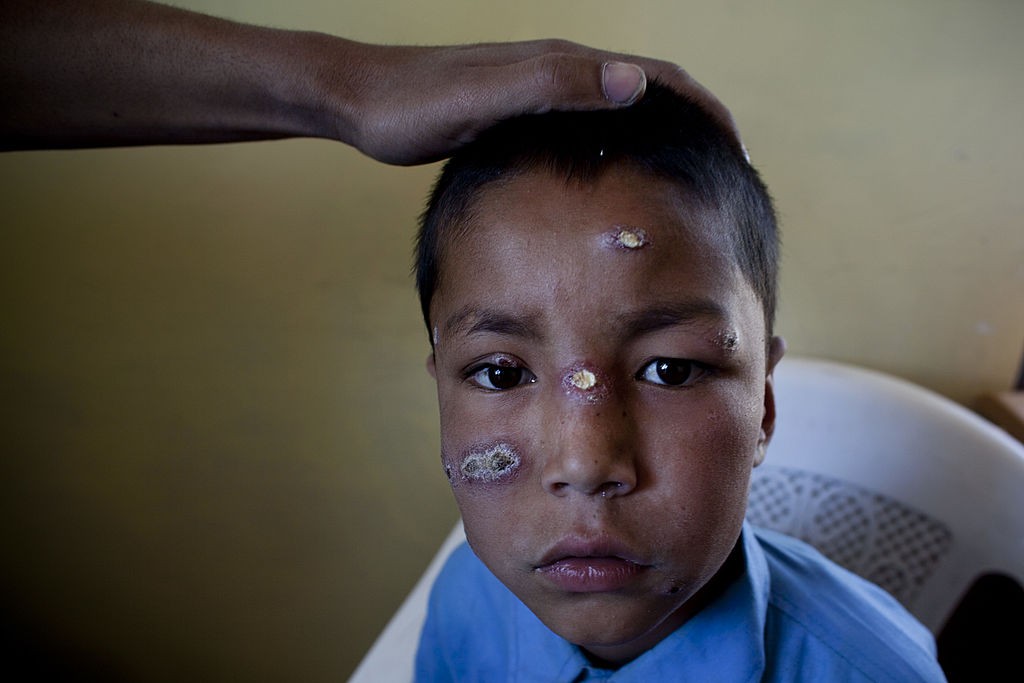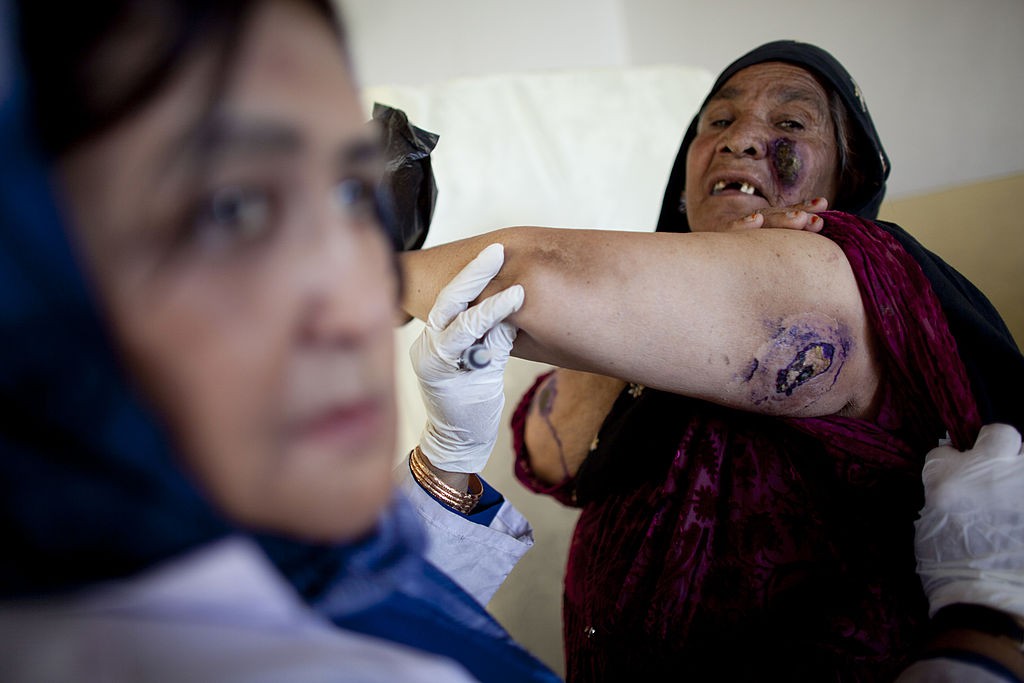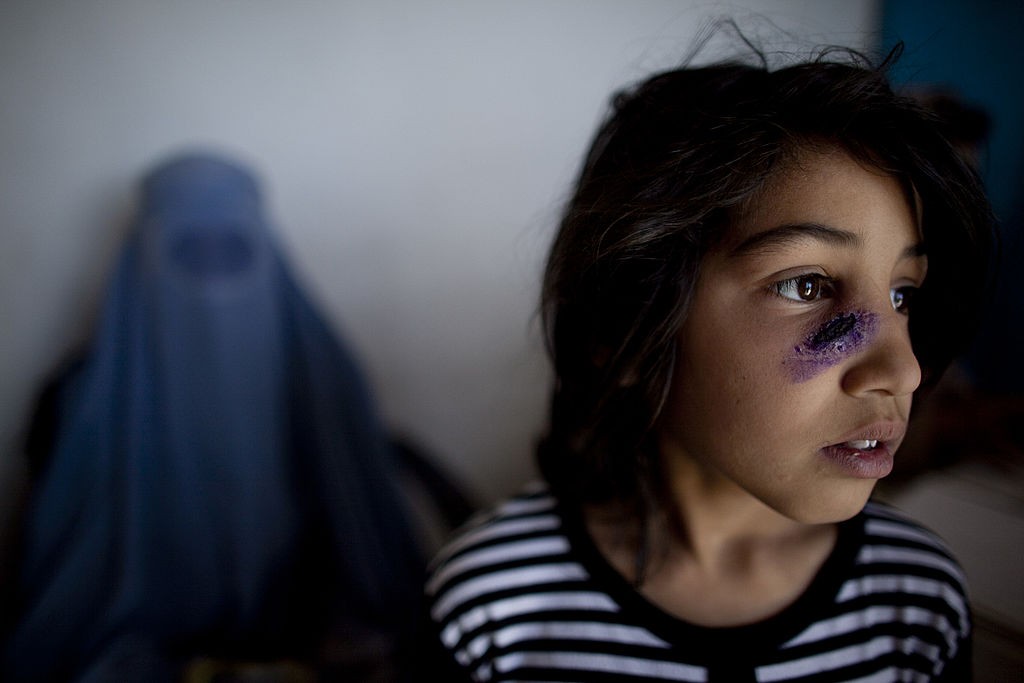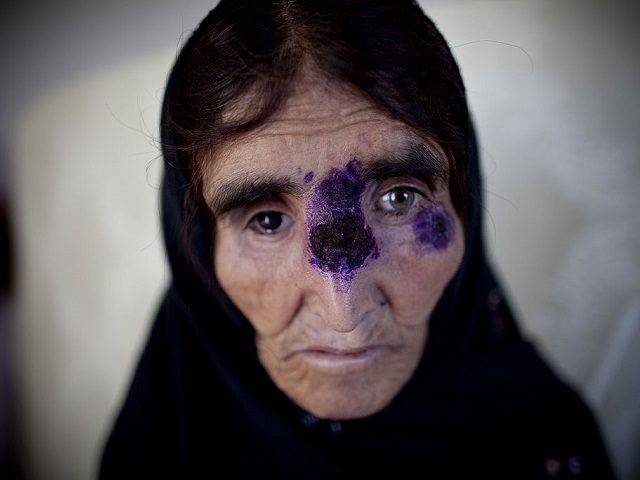Syrian refugees are bringing a horrific skin disease called cutaneous leishmaniasis to neighboring countries.
From the Daily Mail:
A disfiguring tropical disease that had been contained to Syria has now spread across the Middle East as millions are displaced from the war-torn region.
Cutaneous leishmaniasis is a parasitic disease spread by bites from infected sand flies.
It can lead to severe scarring, often on the face, and regularly goes undiagnosed and untreated.

KABUL, AFGHANISTAN – MAY 15: An Afghan recieves treatment for a tropical skin disease at a clinic on May 15, 2010 south of Kabul, Afghanistan. The Afghan capital, Kabul, has one of the highest concentrations of the disfiguring skin disease, Cutaneous leishmaniasis, which is a parasitic disease transmitted by the phlebotomine sand fly. The World Health Organization estimated the number of cases in Kabul jumped from 17,000 in early 2000 to around 65,000 in 2009; the disease is non-lifethreatening and treatable with medication. (Photo by Majid Saeedi/Getty Images)

KABUL, AFGHANISTAN – MAY 15: An Afghan recieves treatment for a tropical skin disease at a clinic on May 15, 2010 south of Kabul, Afghanistan. The Afghan capital, Kabul, has one of the highest concentrations of the disfiguring skin disease, Cutaneous leishmaniasis, which is a parasitic disease transmitted by the phlebotomine sand fly. The World Health Organization estimated the number of cases in Kabul jumped from 17,000 in early 2000 to around 65,000 in 2009; the disease is non-lifethreatening and treatable with medication. (Photo by Majid Saeedi/Getty Images)

KABUL, AFGHANISTAN – MAY 15: An Afghan recieves treatment for a tropical skin disease at a clinic on May 15, 2010 south of Kabul, Afghanistan. The Afghan capital, Kabul, has one of the highest concentrations of the disfiguring skin disease, Cutaneous leishmaniasis, which is a parasitic disease transmitted by the phlebotomine sand fly. The World Health Organization estimated the number of cases in Kabul jumped from 17,000 in early 2000 to around 65,000 in 2009; the disease is non-lifethreatening and treatable with medication. (Photo by Majid Saeedi/Getty Images)

KABUL, AFGHANISTAN – MAY 15: An Afghan recieves treatment for a tropical skin disease at a clinic on May 15, 2010 south of Kabul, Afghanistan. The Afghan capital, Kabul, has one of the highest concentrations of the disfiguring skin disease, Cutaneous leishmaniasis, which is a parasitic disease transmitted by the phlebotomine sand fly. The World Health Organization estimated the number of cases in Kabul jumped from 17,000 in early 2000 to around 65,000 in 2009; the disease is non-lifethreatening and treatable with medication. (Photo by Majid Saeedi/Getty Images)
The disease had been contained to Syria, particularly to regions under ISIS control such as Raqqa, Deir al-Zour and Hasakah.
The civil war has devastated the country’s medical facilities, seen thousands of health workers killed and hospitals destroyed.
Along with the chronic lack of water and bombed out buildings, this created a ripe breeding ground for the sand flies and allowed the disease to thrive.
It had previously been claimed by the Kurdish Red Crescent that the spread of the disease had also been caused by ISIS dumping rotting corpses on the streets. This has been refuted by the scientists at the School of Tropical Medicines.
As more than four million Syrians have fled the region, the disease has now moved into its neighboring countries of Turkey, Lebanon, and Jordan.
Read the rest of the story here.

COMMENTS
Please let us know if you're having issues with commenting.